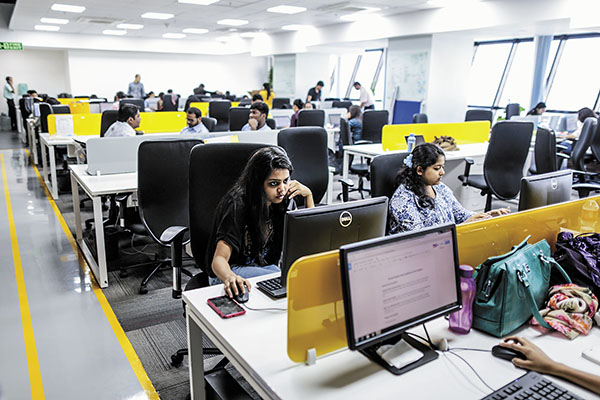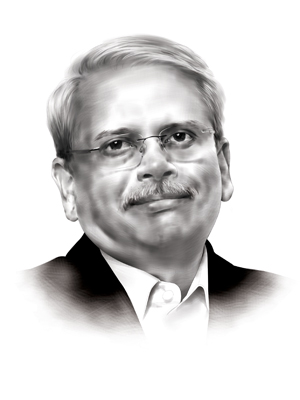
The stars are aligning for startups: Kris Gopalakrishnan
A combination of factors—like government will, growing spirit of enterprise, expanding talent pool, investor support—will ensure the rise and rise of startups and innovation
Will 2016 be the best year yet for innovation and entrepreneurship in India? It could be. Several elements are falling in place. Technology, applications, talent, funding and policy support are all aligned to create the best environment for startups in the country.
Technology, especially information technology (IT), continues to evolve to increase the speed of processors. Apple’s A9 processor, as well as other processors used in the latest smartphones, rack up impressive benchmark numbers. These numbers are better than those from the desktop computers of last year. With the announcement of Raspberry Pi Zero, the cost of a programmable computer has come down to $5 per piece. The prices of processing and storage on cloud are also coming down year-on-year. Smartphones and handheld devices have become the default user interface devices—costs of these are reducing for similar configurations too.
We will see an increase in the number of smartphones, with India already becoming the fastest growing market. This creates a larger market for smartphone-based applications and solutions.
With these developments and by combining the smartphone with backend cloud, it has become possible to develop more complex applications. Increasingly, this is the combination that is being used for enterprise applications like Enterprise Resource Planning (ERP). For a startup, development costs and capital costs are lower than ever.
Programmable computers can be embedded in more devices and appliances creating a world of intelligent things—sometimes referred to as Internet of Things (IoT). Broadband connectivity is becoming cheaper and ubiquitous. With the introduction of 4G and LTE telecommunication services and technologies like WiFi, Bluetooth, NFC and ZigBee, we are able to create a world where everything that needs to be monitored and tracked can be connected together. We are able to create new applications like connected cars, smart homes and buildings, remote monitoring, wearable devices, smart grids, etc. The number of innovative applications will continue to increase as we continue to put intelligence into things.
Every industry is being re-imagined with these new IT capabilities. Taxi services, hospitality, education, health care, banking and finance are all being transformed and we will see more innovative applications in 2016. India can become the laboratory to the world since we have very few legacy applications—we are underinvested in IT and this can become a positive for us as we look to leapfrog in the use of IT in applications. These applications can be cheaper to use since development costs are lower. This will benefit India as well as the developing world at large.
With advances in computing and the use of computing in other sectors, we can develop newer applications. One such example is personalised medicine. DNA testing allows us to identify potential inherited diseases and, with genome editing, it is possible to eliminate some of these inherited diseases. With connected vehicles, we can reduce the number of road accidents. Wearable devices can be used to monitor the health of individuals and detect heart attacks, angina and strokes early. Digital cash can eliminate the use of credit cards or even currency notes. Innovation is limited only by our imagination and the need to preserve legacy applications that we are using today.
Research is an area where India can play a bigger role in the future. We have the talent and we are on par with information, thanks to the internet. Since the cost of living is lower in India, people costs would be lesser for the research conducted here. This will lower the overall cost of research and in the case of diseases, find cheaper and faster cures.

Operations at food ordering startup TinyOwl. In 2016, more startups could emerge and more funds will be invested in them than ever before
Over the last 20 years, India has developed a large, world class talent pool in IT. India’s 4 million IT professionals is the second largest pool in the world and in the next few years, we will have the largest talent pool as the pool grows by about 10-12 percent annually. Similarly, as other industries develop and, sometimes, leapfrog, we will grow a world class talent pool for these industries. India’s per capita income is expected to grow to $5,000 per annum over the next 10 years.
The number of people becoming entrepreneurs will also increase. Even if a small percentage of professionals turn entrepreneurs, the number is large because the base is large. In 2015, the total number of funded startups crossed 4,000 and the growth was estimated to be 300 percent.In 2016, this number is expected to continue to grow.
More money is expected to be available for funding since the government has allowed Foreign Direct Investment (FDI) into Alternative Investment Funds (AIFs) investing in India. India-sponsored and -managed AIFs can invest in any sector without the sectoral caps as applied to FDI.
Larger enterprises in IT and other sectors have created separate teams within their organisations to identify relevant startups that they can work with and fund. Some of these companies are creating dedicated funds to invest in startups.
The central government as well as several state governments are reviewing and changing several regulations that affect startups such as registration of new businesses, ongoing compliance requirements, labour laws, ease of closing down of businesses, etc. Financial incentives are also available through several government-supported investment funds and grants.
There are a few areas that need special mention and may get additional support from governments and larger enterprises. One is clean technology. The world, through the Paris declaration in 2015, has announced its renewed commitment to the environment. The Indian government is also determined to increase power generation from alternative and renewable sources. New solutions are sought for potable water, sanitation, fuel efficient and less polluting vehicles, smart cities and better government services through the Digital India programme, etc.
Globally, there is renewed interest in Artificial Intelligence (AI) and machine learning. There is an explosion of data and information. We are generating more data every year than we have from the beginning of the history of mankind. Current models of computing allow us to query this data through structured queries or search. If we want to understand what the data implies, neither do we have good answers nor do the current models of computing.
I believe that 2016 is going to be an exciting year for innovation and entrepreneurship in India. We will have more startups emerge and more funds will be invested in them than ever before. Some of the current startups will hit billion-dollar valuations. We will see exciting new innovations emerging out of India, sometimes serving the rest of the world.
(This story appears in the 22 January, 2016 issue of Forbes India. To visit our Archives, click here.)















